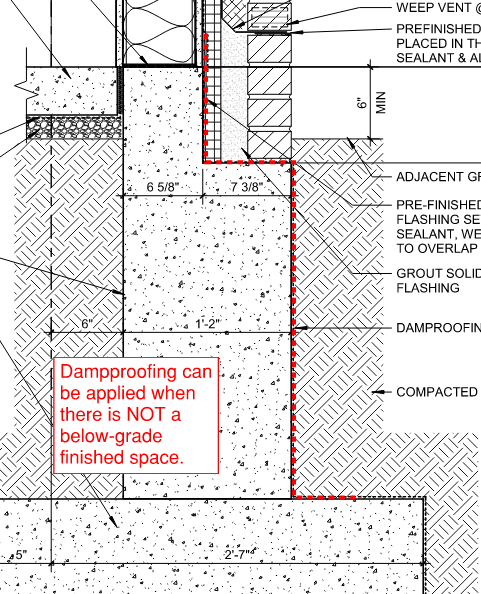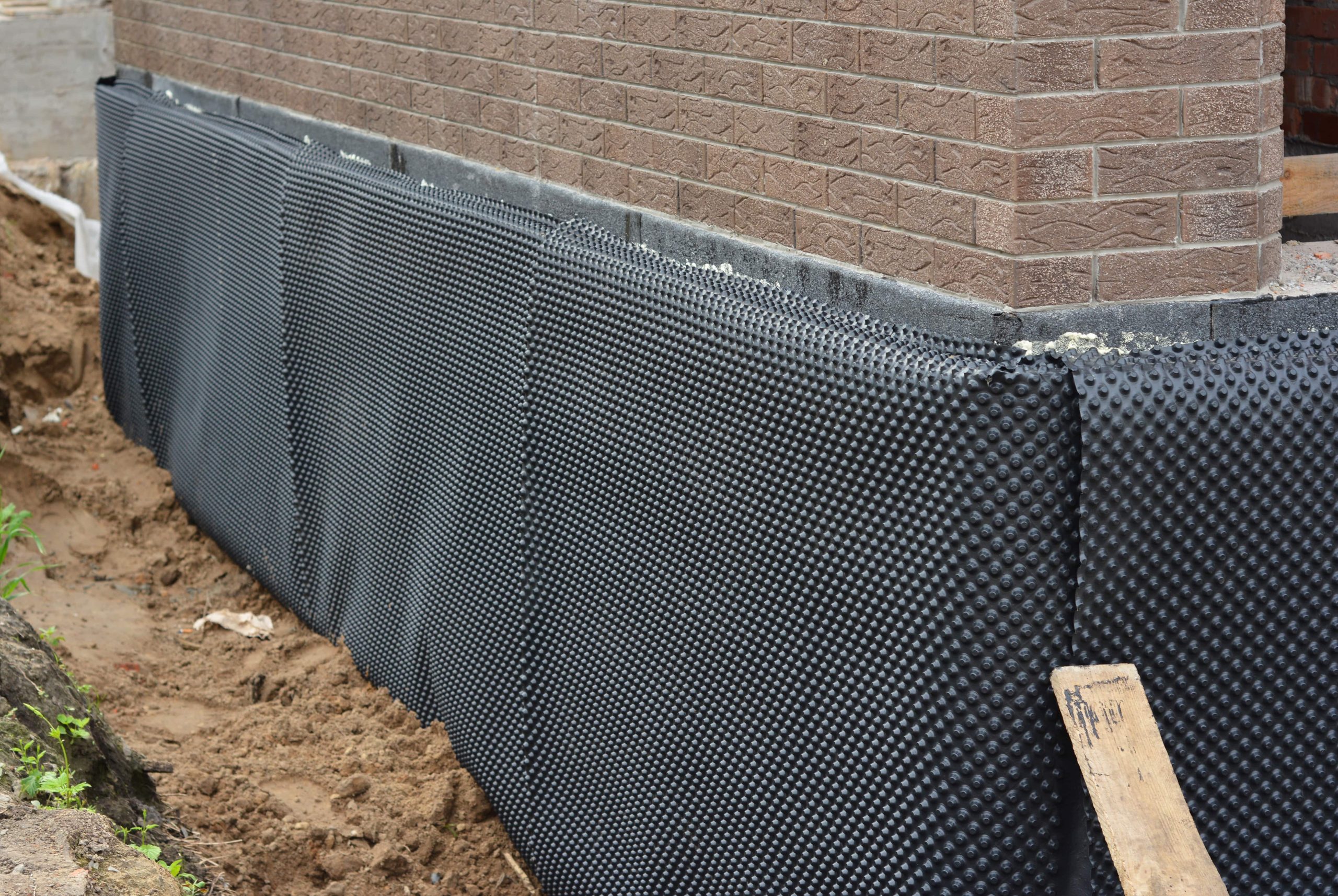The ultimate manual to mould treatment newcastle: What to expect from start to finish
The ultimate manual to mould treatment newcastle: What to expect from start to finish
Blog Article
Checking Out the Different Methods and Solutions for Effective Damp Proofing
Moisture in structures positions considerable obstacles to both architectural stability and interior air high quality. Numerous methods and remedies have actually arised to battle this pervasive issue. From traditional damp-proof membranes to innovative chemical treatments, each approach offers unique benefits. Comprehending these options is crucial for reliable wetness control. Choosing the right service depends on details building conditions and needs, triggering additional expedition into the most effective wet proofing techniques offered.
Understanding the Reasons For Dampness
Moisture can develop from different sources, comprehending these reasons is vital for effective removal. Typically, dampness stems from 3 key resources: climbing damp, permeating damp, and condensation. Climbing damp happens when groundwater takes a trip up-wards with permeable materials, such as block or rock, typically because of an absence of an effective obstacle (damp removal newcastle). Permeating moist is generally triggered by exterior elements, including roofing system leakages, faulty seamless gutters, or harmed walls, allowing water to penetrate a building. Condensation, on the other hand, arises from excess moisture airborne, usually intensified by inadequate air flow and temperature differences, resulting in water beads basing on surfaces. Recognizing these underlying issues is vital, as each kind of wetness requires a tailored approach for removal. Correct evaluation helps in figuring out the most reliable services, inevitably protecting the structural stability of a building and improving interior air high quality
Standard Damp-Proof Membrane Layers

Chemical Damp-Proofing Solutions
Chemical damp-proofing services supply an ingenious approach to stop dampness breach in structures. These approaches typically involve the application of fluid chemicals that permeate masonry and create a barrier versus rising wet. Commonly made use of chemicals consist of silanes, siloxanes, and other water-repellent agents that respond with surface products to develop a hydrophobic layer.The application process generally calls for exploration holes into the walls, injecting the chemical solution, and allowing it to treat. This method is especially useful for older structures where traditional damp-proof membranes might be unwise. Chemical damp-proofing can be much less turbulent and a lot more affordable than substantial remodelling projects.While efficient, these options depend on correct application and environmental conditions for peak performance. damp removal newcastle. Normal maintenance and surveillance are vital to assure the durability of the damp-proofing treatment. Overall, chemical damp-proofing stands for a versatile choice for protecting buildings against moisture-related damage
Dental Caries Wall Surface Building And Construction Methods
Tooth cavity wall surface building methods offer many benefits, specifically in moisture control and power efficiency. By integrating an air gap between 2 layers of stonework, these wall surfaces effectively alleviate water access while enhancing insulation. This mix not just safeguards frameworks from wetness but likewise adds to reduced energy usage.
Advantages of Cavity Wall Surfaces
When considering effective moist proofing methods, the advantages of dental caries walls stick out prominently. Tooth cavity wall surfaces include 2 different layers, creating an air space that effectively reduces dampness infiltration. This style decreases the risk of moisture, as the external wall surface acts as an obstacle against rainfall and water access. Furthermore, dental caries walls improve thermal insulation, which adds to power effectiveness by lowering heat loss. They likewise provide sound insulation, aiding to create a quieter indoor atmosphere. The air gap enables for ventilation, which helps in wetness control and decreases the likelihood of mold and mildew development. These advantages not just improve the overall convenience of a building yet likewise add to its durability and structural stability.
Wetness Control Techniques
Effective wetness control methods are vital in tooth cavity wall building to guarantee lasting protection versus wetness. One main technique entails the consolidation of weep openings, which facilitate water drain from the cavity, protecting against accumulation. In addition, making use of breathable membrane layers can assist manage wetness degrees while permitting caught vapor to leave. Correct placement of insulation is also essential, as it ought to not obstruct drainage paths. In addition, ensuring that the external leaves of the tooth cavity wall are created with water-resistant products improves general sturdiness. Routine maintenance checks are important to determine any kind of clogs or damages early, protecting the framework's stability. Eventually, a mix of these techniques creates a robust defense against wetness invasion in dental caries walls.
Insulation and Power Effectiveness
Insulation plays an essential role in improving power efficiency within cavity wall building and construction. By integrating protecting materials, these walls create a thermal obstacle that minimizes warmth loss and minimizes energy usage. Efficient insulation not only helps preserve a steady interior temperature level yet also alleviates the risk of wetness, as it stops condensation within the wall tooth cavity. Different methods, such as making use of inflexible foam boards or mineral wool, can be employed to accomplish ideal insulation performance. Furthermore, proper installment is important to assure that voids and voids are lessened, which can or else endanger power performance. Ultimately, a well-insulated dental caries wall adds significantly to total sustainability and lowers heating and air conditioning prices for house owners.
Exterior Damp Proofing Approaches
Exterior wet proofing techniques are necessary for securing frameworks from moisture infiltration. Two efficient strategies consist of the application of water-proof membranes and the installation of French drains. These options help alleviate water build-up and maintain the stability of buildings.
Waterproof Membrane Layer Application
While various approaches exist for protecting against dampness ingress, the application of water-proof membrane layers continues to be an extremely efficient external damp proofing technique. These membranes are normally made from materials such as polyethylene, rubber, or changed bitumen, offering a robust barrier against water penetration. The installment procedure includes using the membrane to the outside surface areas of foundations or walls, guaranteeing total insurance coverage to avoid leaks. Proper attachment and sealing at joints are crucial to maximizing performance. Waterproof membranes can be used in various kinds, consisting of fluid layers and sheet membranes, allowing for flexibility based upon the certain needs of the structure. This method not only shields buildings from moisture however likewise improves their durability and architectural honesty.
French Drainpipe Setup
One efficient technique for taking care of groundwater and avoiding wetness build-up around a building's structure is the installment of a French drainpipe. This drain system includes a trench filled with crushed rock and a perforated pipe that redirects surface area water far from the foundation. Proper installation requires mould treatment newcastle cautious preparation, making sure that the drainpipe slopes far from the structure to help with ideal water flow. Furthermore, the area of the drain is vital; it should be positioned in areas prone to merging or excess wetness. Normal maintenance, consisting of cleaning particles from the crushed rock and making certain the pipeline stays unhampered, is vital for long-term effectiveness. Inevitably, a well-installed French drainpipe can greatly lower the danger of water-related problems in basements and structures.
Interior Waterproofing Approaches
Inside waterproofing methods are essential for shielding a building's interior from dampness seepage and possible water damages. These methods normally include the application of customized materials and techniques created to produce a moisture obstacle within the framework. One typical method is making use of waterproof finishings or sealants on wall surfaces and floorings, which stop dampness from penetrating surfaces.Additionally, mounting indoor drainage systems, such as sump pumps, can successfully handle water buildup in cellars and creep areas. An additional method entails the use of vapor barriers, which are installed to prevent dampness motion from the ground into living spaces.Moreover, resolving any kind of fractures or voids in walls or structures with proper sealants ensures a thorough defense against water breach. By applying these indoor waterproofing approaches, homeowner can greatly lower the danger of mold and mildew development, architectural damage, and other moisture-related problems. Proper execution of these techniques is vital for lasting security and structure integrity.
Regular Upkeep and Examination Practices
Normal maintenance and evaluation techniques are important for guaranteeing the long-lasting efficiency of moist proofing solutions in any building. Regular checks make it possible for homeowner to determine early signs of wetness intrusion, such as peeling paint, mold and mildew growth, and musty smells. These indications can signify underlying concerns that require immediate attention.Inspections must be carried out at least every year, concentrating on vulnerable locations like cellars, crawl spaces, and exterior walls. During these evaluations, homeowner need to take a look at sealers, drainage systems, and ventilation to verify they work correctly.Additionally, maintaining downspouts and gutters is essential, as clogged up systems can lead to water accumulation near the structure. Carrying out a normal maintenance routine, along with prompt repair work, can substantially prolong the life-span of damp proofing actions and safeguard the structural integrity of the structure. Positive measures inevitably add to the general wellness and safety of the living environment.
Often Asked Questions
How Much Time Does Damp Proofing Commonly Last?
The period of moist proofing efficiency varies, commonly lasting in between 20 to 50 years. Elements such as application high quality, environmental problems, and maintenance practices considerably affect the durability of the moist proofing treatment.

Can I Damp Evidence My Home Myself?
The specific pondered the usefulness of do it yourself damp proofing. With correct research study and the appropriate materials, it is feasible. They likewise recognized the value of specialist guidance to ensure long-lasting efficiency and stop future issues.
What Are the Indicators of Inadequate Damp Proofing?
Indications of ineffective moist proofing include consistent musty odors, visible mold and mildew development, peeling off paint, moist patches on walls, and timber degeneration - damp removal newcastle. Homeowners need to deal with these issues immediately to stop more damage and health concerns
Does Damp Proofing Affect Indoor Air Top Quality?

How Much Does Expert Damp Proofing Expense?
Professional damp proofing expenses differ significantly, typically varying from $1,000 to $5,000 depending upon the building's dimension, the extent of the moist issue, and chosen approaches. Each scenario calls for a tailored assessment for precise rates. Frequently, moisture stems from three main resources: increasing damp, passing through moist, and condensation. When considering reliable wet proofing approaches, the benefits of dental caries walls stand out prominently. Outside wet proofing approaches are vital for shielding frameworks from moisture infiltration. While different techniques exist for preventing wetness ingress, the application of waterproof membrane layers stays a highly reliable exterior damp proofing method. Indicators of ineffective moist proofing include consistent moldy smells, visible mold and mildew growth, peeling off paint, moist spots on walls, and timber decay.
Report this page